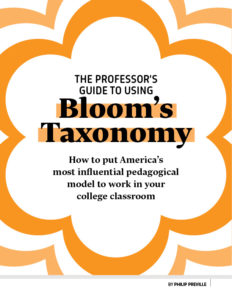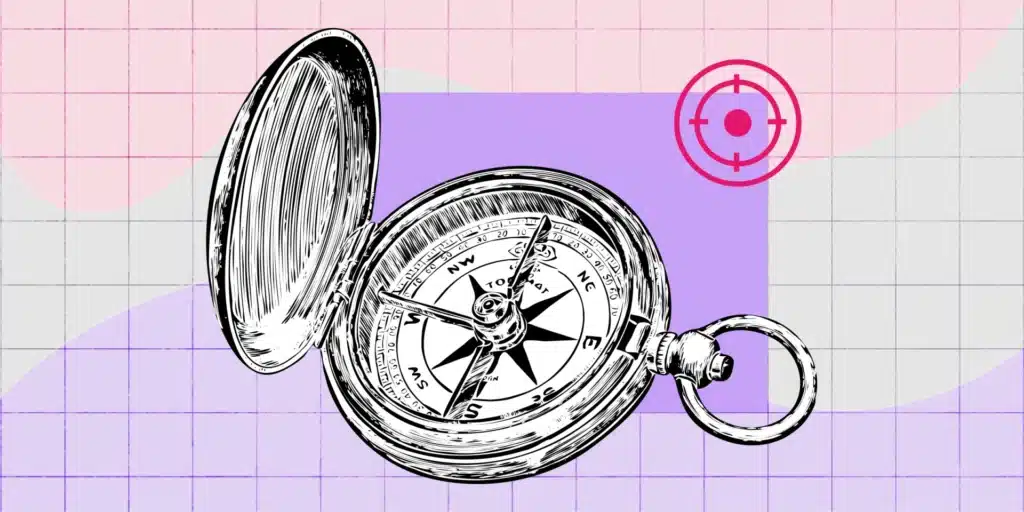It’s a triumphant saga that begins in deep obscurity. At the 1948 convention of the American Psychological Association (APA), a group of assessment experts and college examiners agreed that it would be useful to be able to classify educational goals, in order to better assess student performance in American colleges. So they did what academics do: they formed a committee. Chaired by University of Chicago professor Benjamin Bloom, the committee met every year thereafter, coming together following every APA convention to build and refine their classification system.
In 1956, the inaugural Taxonomy of Educational Objectives was published, complete with a triangular diagram showing how educational attainment rises through six different orders of learning, from basic information recall through application to analysis and evaluation. Today, more than 60 years later, Bloom’s taxonomy—the fruit of an academic committee’s eight years of labor—is arguably the single most influential work in American education, shaping the content and delivery of learning everywhere from kindergarten classrooms to graduate laboratories.
Subscribe to Top Hat’s weekly blog recap
Get the best posts of the week delivered to your inbox:
Bloom’s taxonomy is foundational knowledge for every undergraduate program in education and in cognitive psychology. Though it was initially intended simply as an assessment aid, it has become an emblem for curriculum design, used to set learning objectives and design classroom activities.
It has been adapted for use in elementary and high school classrooms and applied to every academic discipline under the sun. It has inspired countless blog posts, technology apps and a multitude of unusual resources (such as a crash course in Bloom’s via the TV show Seinfeld). And while it has been the object of controversy among educational theorists, Bloom’s taxonomy has been revised only once—proof of the concept’s durability and timelessness.
Yet for all its influence, many college educators remain unfamiliar with Bloom’s taxonomy. Ironically, though Bloom and his colleagues had intended the taxonomy to be used in higher education, it took deepest root in the K-12 field. The reason is simple: K-12 teachers were all steeped in Bloom’s taxonomy as part of their education degrees. College faculty, who typically don’t study teaching before becoming teachers, often begin their instructional careers—and even continue for years—without Bloom’s help.
Increasingly, they can’t do without it. More and more state accreditors and university administrations are demanding that faculty clearly state the learning objectives for each of their courses. Professors must then make good on those objectives: planning their lectures and activities to help students meet them, and assessing their progress both on the fly and at semester’s end. New technologies, from online courses to in-class smartphone apps to digital textbooks, are upending traditional lecture-based teaching. And today’s distracted students are disoriented in the classroom, unclear on how to learn in a college setting.
A basic understanding of Bloom’s taxonomy, and how to apply it for higher education, makes it easy for faculty to clarify learning objectives, adapt technology and develop classroom activities for any course. Instructors can even use Bloom’s to cut through the noise of distraction by helping students set expectations for themselves.
All this from a 1956 committee report that predates the widespread adoption of the television.
 Arguably the single most influential work in American education, Bloom’s taxonomy has helped shape the content and delivery of learning from kindergarten classrooms to graduate laboratories. Yet for all its influence, many college educators remain unfamiliar with this hierarchical model.
Arguably the single most influential work in American education, Bloom’s taxonomy has helped shape the content and delivery of learning from kindergarten classrooms to graduate laboratories. Yet for all its influence, many college educators remain unfamiliar with this hierarchical model.
To help, we’ve written an exclusive free e-book, The Professors’ Guide to Bloom’s Taxonomy. Download it now by filling in the form below, and you’ll hear from professors who have put Bloom’s taxonomy to work.


